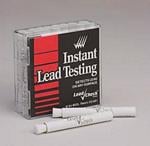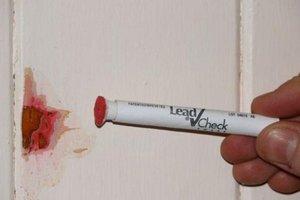EPA Announces More Lead Paint Violation Fines; This Time Against Landlords
Seems EPA has started their publicity campaign regarding enforcement of RRP and other lead related regulations. This one is not RRP specific, but as the second violation announcement this week it certainly seems to demonstrate that EPA is using enforcement and press releases to get their message out about compliance with lead paint requirements.
News Release
U.S. Environmental Protection Agency
New England Regional Office
April 11, 2012
Contact: Paula Ballentine, 617-918-1027
Conn. And Mass. Based Landlords Face Fines for Failing to Notify Tenants about Lead Paint
(Boston, Mass. – April 11, 2012) The owners of rental properties in Bridgeport, Conn. as well as South Boston, Roxbury, and Dorchester, Mass., face EPA penalties for violating federal lead paint disclosure rules. In both cases, these violations potentially put tenants at risk of exposure to lead hazards.
According to a complaint filed by EPA’s New England office, Juan Hernandez allegedly violated lead-based paint disclosure requirements seven times when he rented apartment units in Bridgeport, Conn. between 2008 and 2010. Mr. Hernandez faces an EPA penalty of up to $127,150 for violating federal lead paint disclosure rules. During the time period relevant to EPA’s investigation, all of the apartment buildings owned by Mr. Hernandez were located in potential environmental justice areas.
In a separate EPA complaint, Edward Franco, owner of El Paso Management, and its affiliates allegedly violated lead-based paint disclosure requirements when they rented apartment units three times in South Boston, Roxbury, and Dorchester in 2009. Most of the tenants involved in this case live in low income and/or minority areas.
Both parties are charged with failing to give tenants required lead hazard information pamphlets, failing to include lead warning statements in leases, failing to disclose any known lead-based paint or lead-based paint hazards, and/or failing to provide records or reports pertaining to lead-based paint or lead-based paint hazards.
Federal lead disclosure rules are meant to give tenants adequate information about the risks associated with lead paint so that they can make informed decisions before signing a lease contract. Property owners leasing housing built before 1978 are required to provide the following information to tenants: the EPA-approved lead hazard information pamphlet, Protect Your Family from Lead in Your Home; a lead warning statement; statements disclosing any known lead-based paint and/or lead-based paint hazards; and copies of all available records or reports regarding lead-based paint and lead-based paint hazards. This information must be provided to tenants before they enter into leases.
Infants and young children are especially vulnerable to lead paint exposure, which can cause developmental impairment, reading and learning disabilities, impaired hearing, reduced attention span, hyperactivity and behavioral problems. Adults with high lead levels can suffer difficulties during pregnancy, high blood pressure, nerve disorders, memory problems and muscle and joint pain.
More information:
Lead-based paint health hazards (www.epa.gov/ne/eco/ne_lead/index.html)
Lead-based paint disclosure rule (www.epa.gov/ne/enforcement/leadpaint/index.html)
Click here for more RRPedia blog posts for landlords.
Shawn is available to help landlords with the RRP Rule. If you are a landlord or belong to a landlord association that is seeking assistance with the RRP rule, contact Shawn today to discuss how he can help.

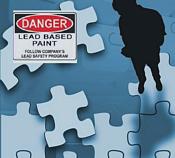 Looking for accurate information about the EPA RRP rule?
Looking for accurate information about the EPA RRP rule? 
 Recently, EPA recognized the LeadCheck Test Kits for testing drywall and plaster for lead under the RRP rule.
Recently, EPA recognized the LeadCheck Test Kits for testing drywall and plaster for lead under the RRP rule. 3M reported that they are temporarily using the video until a new video is released. The major change 3M will make to the video will include the following language:
3M reported that they are temporarily using the video until a new video is released. The major change 3M will make to the video will include the following language:

 No, the use of vertical containment is not required for interior jobs, but you can minimize the amount of floor containment needed by making use of vertical containment for interior projects. Floor containment measures may stop at the edge of the vertical barrier when using a vertical containment system consisting of impermeable barriers that extend from the floor to the ceiling and are tightly sealed at joints with the floor, ceiling and walls. One advantage of vertical containment in addition to the reduction of floor area to be covered is the potential reduction of the floor area and other areas that will need to be cleaned on completion of renovations
No, the use of vertical containment is not required for interior jobs, but you can minimize the amount of floor containment needed by making use of vertical containment for interior projects. Floor containment measures may stop at the edge of the vertical barrier when using a vertical containment system consisting of impermeable barriers that extend from the floor to the ceiling and are tightly sealed at joints with the floor, ceiling and walls. One advantage of vertical containment in addition to the reduction of floor area to be covered is the potential reduction of the floor area and other areas that will need to be cleaned on completion of renovations Yes, vertical containment, or an equivalent system of containing the work area, is required for exterior jobs where the property line is within 10 feet of the area of paint disturbance. In addition, vertical containment can also be used to minimize the amount of ground containment needed for a project. Ground containment measures may stop at the edge of the vertical barrier when using a vertical containment system.
Yes, vertical containment, or an equivalent system of containing the work area, is required for exterior jobs where the property line is within 10 feet of the area of paint disturbance. In addition, vertical containment can also be used to minimize the amount of ground containment needed for a project. Ground containment measures may stop at the edge of the vertical barrier when using a vertical containment system. Constructing vertical containment can also allow the contractor to create a sealed working space within a room where the dust can be completely contained to a limited and controlled area. The space created is referred to as a
Constructing vertical containment can also allow the contractor to create a sealed working space within a room where the dust can be completely contained to a limited and controlled area. The space created is referred to as a 
 EPA has recently updated recognition of the 3M™ LeadCheck™ for use on drywall and plaster. Below are the specific instructions from the manufacturer, 3M, for conducting testing of drywall and plaster for lead. These instructions must be followed by the certified renovator for the test results to be recognized under the RRP rule by EPA. I think the key point to remember when doing such testing is that you are testing the paint, not the drywall:
EPA has recently updated recognition of the 3M™ LeadCheck™ for use on drywall and plaster. Below are the specific instructions from the manufacturer, 3M, for conducting testing of drywall and plaster for lead. These instructions must be followed by the certified renovator for the test results to be recognized under the RRP rule by EPA. I think the key point to remember when doing such testing is that you are testing the paint, not the drywall:
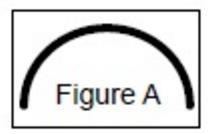 a) With a clean utility knife, make a nickel sized half circle cut at a low angle (about 5 degrees) cutting down to the bare drywall (gypsum) and plaster core to expose all layers of paint. Make the cut as seen in figure A.
a) With a clean utility knife, make a nickel sized half circle cut at a low angle (about 5 degrees) cutting down to the bare drywall (gypsum) and plaster core to expose all layers of paint. Make the cut as seen in figure A. As EPA amends the RRP rule, renovators working in states that have taken over the rule from EPA need to know if and how these states incorporate the changes into their own rule. Yesterday I inquired with the State of Massachusetts to find out about a few recent amendments and changes.
As EPA amends the RRP rule, renovators working in states that have taken over the rule from EPA need to know if and how these states incorporate the changes into their own rule. Yesterday I inquired with the State of Massachusetts to find out about a few recent amendments and changes. Question: Can you tell me if MA allows the lead safe renovation supervisor to take paint chip samples same as EPA does?
Question: Can you tell me if MA allows the lead safe renovation supervisor to take paint chip samples same as EPA does? Question: Also, does MA now recognize LeadCheck for Drywall and Plaster?
Question: Also, does MA now recognize LeadCheck for Drywall and Plaster?
 In reality what they have done has not been effective. Either the message is not effective, the placement is not effective or both. According to a
In reality what they have done has not been effective. Either the message is not effective, the placement is not effective or both. According to a 
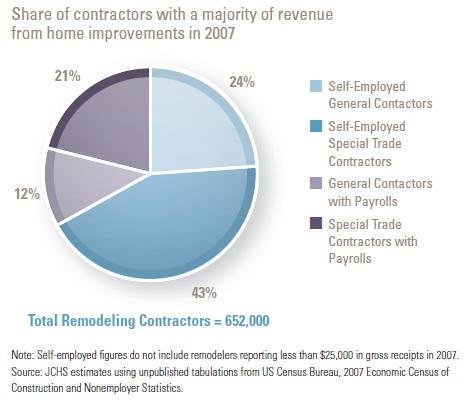
 So far EPA has only published one violation since the rule came into effect in April of 2010. On the other hand the state of Massachusetts took over the rule in July of 2012 and has
So far EPA has only published one violation since the rule came into effect in April of 2010. On the other hand the state of Massachusetts took over the rule in July of 2012 and has  It is a fact that lead is poisonous and RRP activities can cause poisoning. However, EPA does not know how many children were actually poisoned by RRP activities before the rule came into effect. If you check any of the data it refers to RRP activities as the “likely source” of lead poisoning, not “the cause”. That being the case, EPA has no way to know if the RRP rule is making a difference or not. It is ‘likely” that it is helping. But, without knowing where EPA started and where we are now that the rule has been in place for almost a year, EPA has no idea if what they have been doing is effective enough and or if or where it can improve effectiveness within the rule.
It is a fact that lead is poisonous and RRP activities can cause poisoning. However, EPA does not know how many children were actually poisoned by RRP activities before the rule came into effect. If you check any of the data it refers to RRP activities as the “likely source” of lead poisoning, not “the cause”. That being the case, EPA has no way to know if the RRP rule is making a difference or not. It is ‘likely” that it is helping. But, without knowing where EPA started and where we are now that the rule has been in place for almost a year, EPA has no idea if what they have been doing is effective enough and or if or where it can improve effectiveness within the rule.  Actually this is about helping spread the word to children and parents about avoiding the dangers of lead exposure.
Actually this is about helping spread the word to children and parents about avoiding the dangers of lead exposure.  I suggest renovators could use this video on their website. Consider creating an area on your site dedicated to the RRP Rule. Make it a place that offers information, advice and links that would help visitors understand the rule and the realities of lead exposure. If you do so you can send prospects and customers to your site to help pre-educate them prior to a sales call or before beginning work at their home.
I suggest renovators could use this video on their website. Consider creating an area on your site dedicated to the RRP Rule. Make it a place that offers information, advice and links that would help visitors understand the rule and the realities of lead exposure. If you do so you can send prospects and customers to your site to help pre-educate them prior to a sales call or before beginning work at their home. 
